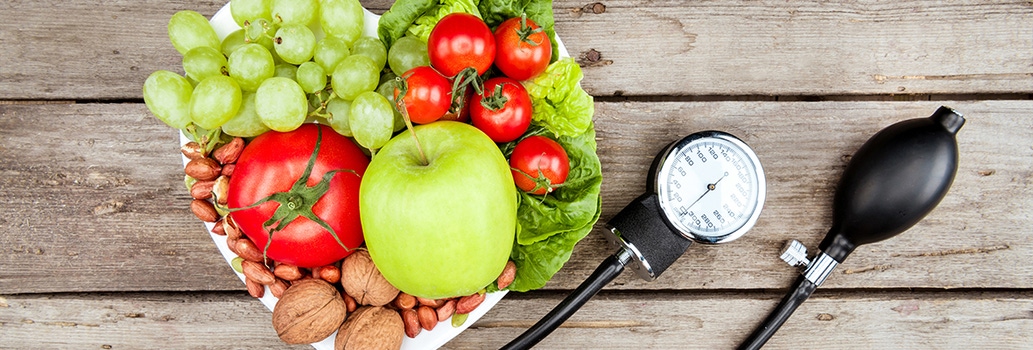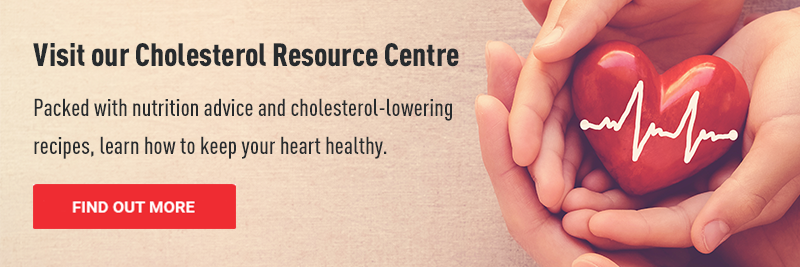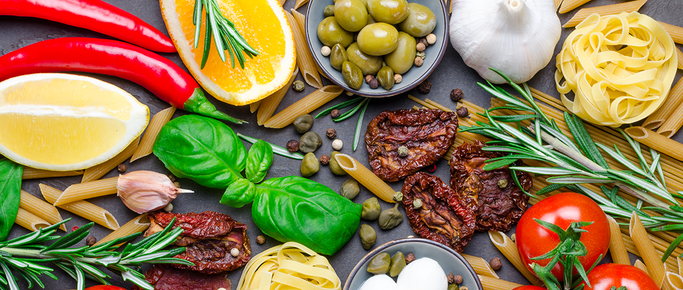
What's the DASH diet?
Is it possible to keep high blood pressure in check just by eating right? With no medication?
While it may sound too good to be true, these are the results people have achieved on the DASH diet.
The DASH diet has been topping “best diets” lists for decades, because of its proven ability to reduce blood pressure simply through healthy eating. It even gets the thumbs up from the Heart Foundation.
DASH is short for Dietary Approaches to Stop Hypertension (high blood pressure). The eating plan was first created 23 years ago by a team of scientists, based on research funded by the United States’ National Institute of Health - Heart, Lung, and Blood Institute.
Doing the DASH could make a lot of sense for many New Zealanders. At least 1 in 5 Kiwis have high blood pressure, and many don’t know it. If untreated, high blood pressure can lead to heart disease, stroke and kidney disease.
The diet is low in salt and also limits foods that contain sugar, saturated fats and trans fats. So, as well as cutting back on your salt intake, you will need to cut back on sweets, sugary drinks and red meat. The principles of the DASH diet are therefore very similar to general healthy eating advice.
There’s a lot of variety in the DASH meal plans, which aim to provide around 2,000 calories or 8,700kJ a day. In these meal plans, plant sources of protein such as tofu or legumes can be substituted for the baked fish, chicken or beef. Food choices will vary from day to day, but it is essential to strictly watch your salt intake.
Although some speciality salts like Himalayan rock salt or sea salt are marketed as healthier alternatives, they actually contain very similar amounts of sodium and therefore should also be limited.
To reduce blood pressure and lower your risk of heart disease, the Heart Foundation recommends eating less than 1,600 mg of sodium – that’s 4g or less than a teaspoon of salt a day.
The standard DASH diet is based on 2,300mg of sodium a day and there is also a lower sodium DASH diet, which is based on 1,500mg of sodium a day.
Since its creation more than two decades ago, studies have consistently shown both versions of the DASH diet can lower blood pressure, with the lower sodium version (1,500mg a day) being the most effective.
As well as lowering blood pressure, it’s also been shown to reduce “bad” LDL cholesterol, and improve insulin resistance and blood glucose control. These are all risk factors associated with obesity, heart disease and type 2 diabetes.
A diet review by the Heart Foundation found "the DASH diet is effective in reducing blood pressure in subjects with elevated blood pressure levels".
Yes it can. While weight loss is not the goal of the DASH diet, its focus on eating whole plant foods and healthier food choices can help people lose weight.
The DASH diet generally includes 2,000 calories a day but if you need to lose weight, you may need to eat fewer calories.
While there’s ample choice with the foods you can eat on the DASH diet, following this way of eating may require a number of dietary changes for some people. To ensure that dietary changes are life long, it is best to make 1 or 2 small changes at a time. It's best to consult with a Registered Dietitian who will be able to work through these changes with you and to provide individual nutrition advice specific to your needs.
While it may sound too good to be true, these are the results people have achieved on the DASH diet.
The DASH diet has been topping “best diets” lists for decades, because of its proven ability to reduce blood pressure simply through healthy eating. It even gets the thumbs up from the Heart Foundation.
DASH is short for Dietary Approaches to Stop Hypertension (high blood pressure). The eating plan was first created 23 years ago by a team of scientists, based on research funded by the United States’ National Institute of Health - Heart, Lung, and Blood Institute.
Doing the DASH could make a lot of sense for many New Zealanders. At least 1 in 5 Kiwis have high blood pressure, and many don’t know it. If untreated, high blood pressure can lead to heart disease, stroke and kidney disease.
What do you eat on the DASH diet?
The main principal of the DASH diet is to eat a wide variety of plant foods rich in the nutrients that help lower blood pressure, specifically potassium, magnesium, calcium, fibre and protein. This means loading up your plate with plenty of fruits and vegetables, beans, unsalted nuts, seeds, and whole grains – as well as low-fat dairy or plant-based alternatives.The diet is low in salt and also limits foods that contain sugar, saturated fats and trans fats. So, as well as cutting back on your salt intake, you will need to cut back on sweets, sugary drinks and red meat. The principles of the DASH diet are therefore very similar to general healthy eating advice.
There’s a lot of variety in the DASH meal plans, which aim to provide around 2,000 calories or 8,700kJ a day. In these meal plans, plant sources of protein such as tofu or legumes can be substituted for the baked fish, chicken or beef. Food choices will vary from day to day, but it is essential to strictly watch your salt intake.
Why is it important to cut back on salt?
Salt contains both sodium and chloride and it’s the sodium part that can negatively impact your health. Over time, eating too much sodium can increase your risk of high blood pressure.Although some speciality salts like Himalayan rock salt or sea salt are marketed as healthier alternatives, they actually contain very similar amounts of sodium and therefore should also be limited.
To reduce blood pressure and lower your risk of heart disease, the Heart Foundation recommends eating less than 1,600 mg of sodium – that’s 4g or less than a teaspoon of salt a day.
The standard DASH diet is based on 2,300mg of sodium a day and there is also a lower sodium DASH diet, which is based on 1,500mg of sodium a day.
Tips to keep your sodium levels down
As the DASH diet is based primarily on a variety of whole plant foods, it’s naturally lower in sodium and higher in potassium. Here are some other tips to keep your sodium levels down:- Use herbs and spices to flavour your food instead of salt;
- Rinse canned foods to remove some of the sodium;
- Limiting high salt condiments like mustard, ketchup, relish, BBQ sauce, soy sauce and teriyaki sauce;
- Cut back on highly processed foods as they often contain high amounts of salt for added flavour or as a preservative; and
- Remember to check food labels, as you may be surprised by where you find salt. Use nutrition panel information and look for foods with less than 120mg sodium per 100g – these are considered low in salt.
What does science say about the DASH diet?
Since its creation more than two decades ago, studies have consistently shown both versions of the DASH diet can lower blood pressure, with the lower sodium version (1,500mg a day) being the most effective. As well as lowering blood pressure, it’s also been shown to reduce “bad” LDL cholesterol, and improve insulin resistance and blood glucose control. These are all risk factors associated with obesity, heart disease and type 2 diabetes.
A diet review by the Heart Foundation found "the DASH diet is effective in reducing blood pressure in subjects with elevated blood pressure levels".
Can the DASH diet help you lose weight?
Yes it can. While weight loss is not the goal of the DASH diet, its focus on eating whole plant foods and healthier food choices can help people lose weight. The DASH diet generally includes 2,000 calories a day but if you need to lose weight, you may need to eat fewer calories.
Are there any cons of the DASH diet?
If your body is not accustomed to a high fibre diet, switching to DASH may cause gas and bloating. To help your body adjust to the diet change, one tip is to start by adding 1 or 2 new high fibre foods a week, instead of all at once.While there’s ample choice with the foods you can eat on the DASH diet, following this way of eating may require a number of dietary changes for some people. To ensure that dietary changes are life long, it is best to make 1 or 2 small changes at a time. It's best to consult with a Registered Dietitian who will be able to work through these changes with you and to provide individual nutrition advice specific to your needs.

The latest nutrition advice, plus health and wellness tips delivered to your inbox monthly


